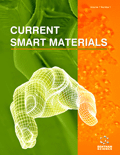Abstract
Introduction: In the applications of room temperature detector for high-energy radiation, there are two critical requirements for the semiconducting material cadmium zinc telluride (CdZnTe): (1) high electrical resistivity to reduce the bulk leakage current and (2) low levels of structural defects which hinder the detectivity as trapping and recombination centers for the carriers. To enhance the performance of the detectors, an optimal single process has been developed in the melt growth of Cd0.8Zn0.2Te by directional solidification with controlled Cd overpressure to maximize the electrical resistivity as well as minimize the structural defects, including Te precipitates/inclusions of the grown CdZnTe crystals.
Methods: Using the phase diagram data of pressure-temperature-composition (P-T-X), melt growth of Cd0.8Zn0.2Te crystals by directional solidification from a starting melt at 1145oC has been performed with various Cd overpressures controlled by the temperature of a Cd reservoir. The grown crystals were sliced and were characterized by electrical resistivity measurements and chemical analysis of Glow Discharge Mass Spectroscopy (GDMS). The structural defects were studied by the infrared (IR) transmission images taken by an IR microscope.
Results: By doping of In (4-6 ppm, atomic) and growing with a Cd reservoir in the range of 785 to 825oC, the electrical conductivity was consistently higher than 109 W-cm and up to 2x1011 W-cm. From the trend of the Te precipitates density observed by the IR micrographs, it was concluded that a Cd reservoir temperature of 820+10oC resulted in the lowest precipitate density.
Conclusion: The employment of a Cd reservoir temperature of 820+5oC during the growth process will provide the optimal Cd pressure over the melt at 1145oC to maximize the electrical resistivity as well as minimize the structural defects, including Te precipitates/inclusions of the grown Cd0.8Zn0.2Te crystals.
Discussion: Since the solids of different compositions, x in the Cd1-xZnxTe system, have different liquidus/solidus temperatures as well as different homogeneity ranges. The procedure presented here for the Cd0.8Zn0.2Te solid may not be applicable to other compositions.
Keywords: Phase diagram, Cd0.8Zn0.2Te crystals, directional solidification, controlled overpressure, Te precipitate, IR transmission micrographs.
Graphical Abstract
 8
8



